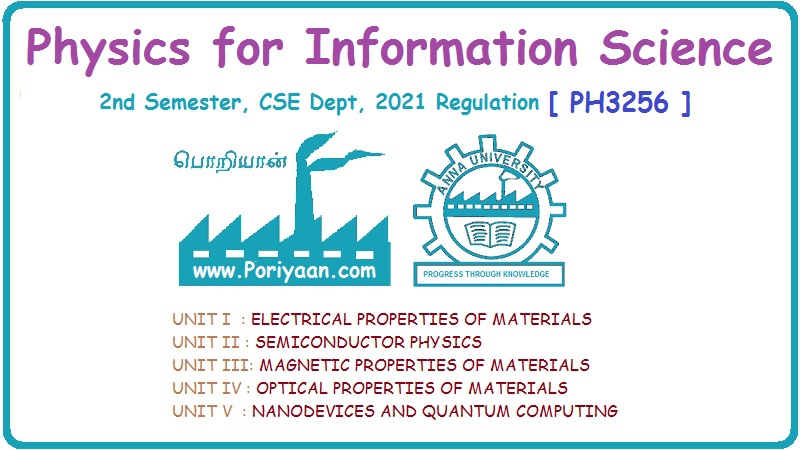Physics for Information Science: Unit I: Electrical Properties of Materials
Classical Free Electron Theory of Metals
After the discovery of electron, Drude and Lorentz attempted for an explanation of electrical and thermal conductivities based on the assumption that metal contains a certain number of free electrons and hence called free electron theory.
CLASSICAL FREE ELECTRON THEORY OF METAL
After the discovery of electron, Drude and Lorentz attempted for an explanation of electrical and thermal conductivities based on the assumption that metal contains a certain number of free electrons and hence called free electron theory.
Postulates of free electron theory
In the absence of electric field
The free electrons in the metals moves freely in the boundaries of the metal, similar to the gas molecules moving in a vessel. (Fig. 1.1)
The forces between the conduction electrons and the ion core is neglected and the total energy of the electron is assumed to be purely kinetic energy (potential energy is zero).
The free electrons move randomly in all directions. The free electrons collides with each other and also with the lattice Elastically, without any loss in the energy.
In the presence of electric field
The free electron moves in the direction opposite to that of the field direction as shown in Fig. 1.2
Since the electrons are assumed to be a perfect gas they obey classical kinetic theory of gases and the electron velocities in the metal obey the Maxwell-Boltzmann statistics.
Drift Velocity: (vd): The average velocity acquired by the free electron in a particular direction, due to the application of electric field is called drift velocity.
Mobility (µ): Mobility is defined as the drift velocity acquired by the free electron per unit electric field (E) applied to it.
Relaxation time (ɩ): It is the time taken by the free electron to reach its equilibrium position from its disturbed position, in the presence of applied field.
where Ɩ is the distance travelled by the electron.
Collision time (τc): It is the average time taken by a free electron between two successive collision.
where λ is the mean free path.
Note: For a isotropic solid like metals τ = τc
Mean free path (λ): The average distance travelled between two successive collision is called mean free path (i.e.,) λ= c̅ τc, where c̅ is the root mean square the velocity of the electron.
Physics for Information Science: Unit I: Electrical Properties of Materials : Tag: : - Classical Free Electron Theory of Metals
Related Topics
Related Subjects
Physics for Information Science
PH3256 2nd Semester CSE Dept | 2021 Regulation | 2nd Semester CSE Dept 2021 Regulation
